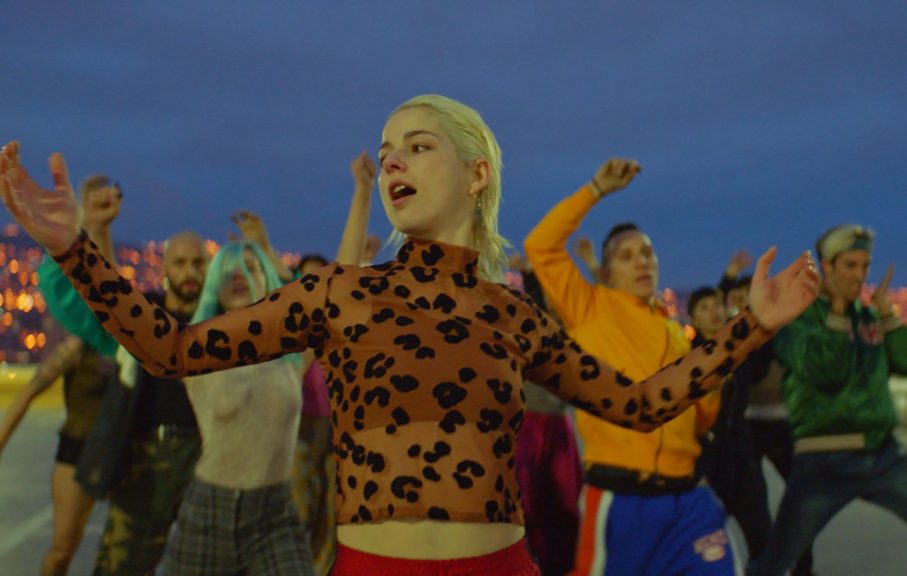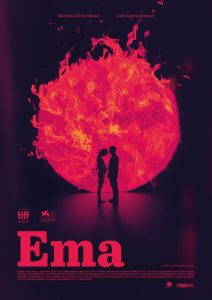Directed by Pablo Larraín | Written by Guillermo Calderón and Alejandro Moreno | 107 min | Mubi
We begin in the aftermath of trauma: Valparaiso marrieds Ema and Gastón (Mariana Di Girolamo and Gael García Bernal) are lead dancer and choreographer in a modern dance company — they’re also tearing each other apart over the adoptive son who they gave up because he did something terrible, which he might’ve learned from his parents. At first you might think the kid was the lucky one to be away from this mean-spirited, recriminatory pair.
But that’s just the launching pad for a wonderful, sensual film. It’s rare the movie that takes a turn in the second act to transform into something else entirely, but that’s what’s going on with Ema. It doesn’t all make sense, but Larraín turns his cinematic ship from awkward, pretentious notes towards something beautiful, and in the end, transformative.
But let’s go back to the trauma. When we first meet that couple, it’s clear they’re both wracked with guilt over their decision-making. It’s hard to know what really happened with the boy, and it’s frustrating to not have any sense of the truth — rather a lot of venom between the adults in the room after the fact.
Ema wants to reconnect with the boy, but how she intends on doing that isn’t entirely clear when she leaves Gastón, retreating into the welcoming embrace of the other dancers in the troupe and their affection for reggaeton, upsetting Gastón’s artistic sensibilities. Ema also gets close to a lawyer (Paola Giannini) and a firefighter (Santiago Cabrera, recently a feature player on Star Trek: Picard) as she enacts her plan with an almost frightening methodology.
As the title suggests, this is really all about Ema. It’s about her gift for seduction, deep-seated anger, pyromaniac tendencies, and her need for connection. A thriller pacing emerges through the midsection as Larraín and his collaborators relinquish the more free-floating scenes in the opening — a refutation of Gastón’s highbrow, pedagogical perspective, going headlong into the streets, a celebration of a feminine and queer culture, embracing sex.
The film uses dance as connective tissue. It links Ema to her squad and as a storytelling element it enriches the narrative rather than being an excuse for it — what I was looking for and missing in Gaspar Noé’s Climax. But, rather than using reggaeton as the exclusive musical thread, it’s an occasional, percussive break — the hypnotic score courtesy of Nicolas Jaar in tandem with cinematography from Sergio Armstrong swaddles Valparaiso cityscapes, a mix of beautiful seaside twilights and industrial streetscapes and alleyways, tones, and colours.
The lingering image of the film is Di Girolamo standing on a street with a flamethrower, while the emotional takeaway is her character’s relentless ambition. I can’t wait to discuss Ema with others. While it doesn’t all work, what does is the most exciting and enigmatic cinema I’ve seen this year.










